
How to Use 5V PSU: Examples, Pinouts, and Specs
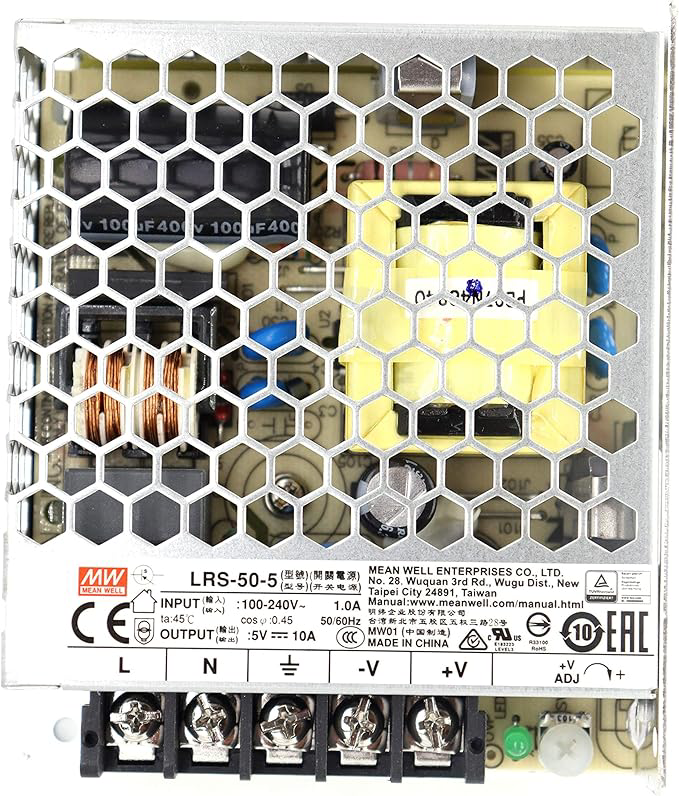
 Design with 5V PSU in Cirkit Designer
Design with 5V PSU in Cirkit Designer5V Power Supply Unit (PSU) Documentation
1. Introduction
A 5V Power Supply Unit (PSU) is an essential electronic component designed to provide a stable and regulated 5-volt output. It is widely used in powering low-voltage electronic circuits, microcontrollers, sensors, and other devices that require a consistent 5V DC supply for reliable operation. The PSU ensures that connected devices receive a steady voltage, protecting them from fluctuations and potential damage caused by unstable power sources.
Common Applications:
- Powering microcontrollers (e.g., Arduino, Raspberry Pi)
- Supplying power to sensors, actuators, and modules
- Driving small DC motors and LEDs
- Providing a stable voltage source for breadboard prototyping
- Charging low-power USB devices
2. Technical Specifications
The following table outlines the key technical details of the 5V PSU:
| Parameter | Value |
|---|---|
| Input Voltage Range | 7V - 12V DC (typical) |
| Output Voltage | 5V DC (regulated) |
| Output Current | Up to 1A (depending on model) |
| Ripple Voltage | < 50mV |
| Efficiency | ~85% |
| Protection Features | Overvoltage, Overcurrent, Short Circuit |
| Operating Temperature | -20°C to +70°C |
| Dimensions | Varies by model (e.g., 25mm x 20mm) |
Pin Configuration and Descriptions
| Pin Name | Description |
|---|---|
| VIN | Input voltage pin (connect 7-12V DC) |
| GND | Ground pin (common ground for input and output) |
| VOUT | Regulated 5V output pin |
3. Usage Instructions
Connecting the 5V PSU in a Circuit
- Input Voltage: Connect a DC power source (7-12V) to the
VINpin. Ensure the input voltage is within the specified range to avoid damaging the PSU. - Ground Connection: Connect the
GNDpin to the ground of your circuit. - Output Voltage: Use the
VOUTpin to supply a stable 5V to your circuit or device.
Important Considerations:
- Input Voltage Range: Always ensure the input voltage is within the specified range (7-12V). Exceeding this range may damage the PSU.
- Current Limitations: Do not exceed the maximum output current rating (1A). Overloading the PSU can cause overheating or failure.
- Heat Dissipation: If the PSU is used near its maximum current rating, ensure proper ventilation or heat sinking to prevent overheating.
- Polarity: Double-check the polarity of the input and output connections to avoid damage to the PSU or connected devices.
Example Circuit:
Below is an example of how to use the 5V PSU to power an Arduino UNO and an LED:
+-------------------+ +-------------------+
| DC Power Source | | Arduino UNO |
| (7-12V) | | |
| | | |
| +---- VIN ------+-------+ VIN |
| | | | |
| +---- GND ------+-------+ GND |
| | | |
+-------------------+ +-------------------+
4. Example Code for Arduino UNO
If you're using the 5V PSU to power an Arduino UNO, you can use the following code to blink an LED connected to pin 13:
// Example code to blink an LED on Arduino UNO
// Ensure the Arduino is powered by the 5V PSU
void setup() {
pinMode(13, OUTPUT); // Set pin 13 as an output pin
}
void loop() {
digitalWrite(13, HIGH); // Turn the LED on
delay(1000); // Wait for 1 second
digitalWrite(13, LOW); // Turn the LED off
delay(1000); // Wait for 1 second
}
Notes:
- Connect the 5V PSU's
VOUTpin to the Arduino'sVINpin. - Ensure the PSU's
GNDpin is connected to the Arduino'sGNDpin.
5. Troubleshooting and FAQs
Common Issues and Solutions
| Issue | Possible Cause | Solution |
|---|---|---|
| No output voltage | Incorrect input voltage or polarity | Verify input voltage and polarity |
| Output voltage fluctuates | Overloading the PSU | Reduce the load or check for short circuits |
| PSU overheating | Exceeding current rating or poor ventilation | Reduce load or improve heat dissipation |
| Connected device not working | Incorrect wiring or insufficient current | Double-check connections and current draw |
FAQs
Q1: Can I use the 5V PSU to power a Raspberry Pi?
A1: Yes, but ensure the PSU can provide sufficient current (at least 2.5A for most Raspberry Pi models). The PSU described here may not be suitable for high-power Raspberry Pi models.
Q2: What happens if I connect an input voltage higher than 12V?
A2: Exceeding the input voltage range can damage the PSU. Always use a regulated DC power source within the specified range.
Q3: Can I use the 5V PSU to charge USB devices?
A3: Yes, as long as the device's current requirements do not exceed the PSU's maximum output current (1A).
Q4: How do I know if the PSU is overloaded?
A4: Symptoms of overloading include fluctuating output voltage, overheating, or the PSU shutting down. Reduce the load to resolve the issue.
6. Conclusion
The 5V Power Supply Unit (PSU) is a versatile and reliable component for powering low-voltage electronic devices and circuits. By following the usage instructions and adhering to the technical specifications, you can ensure safe and efficient operation. Whether you're prototyping with an Arduino or powering sensors, the 5V PSU is an indispensable tool for your electronics projects.
Explore Projects Built with 5V PSU
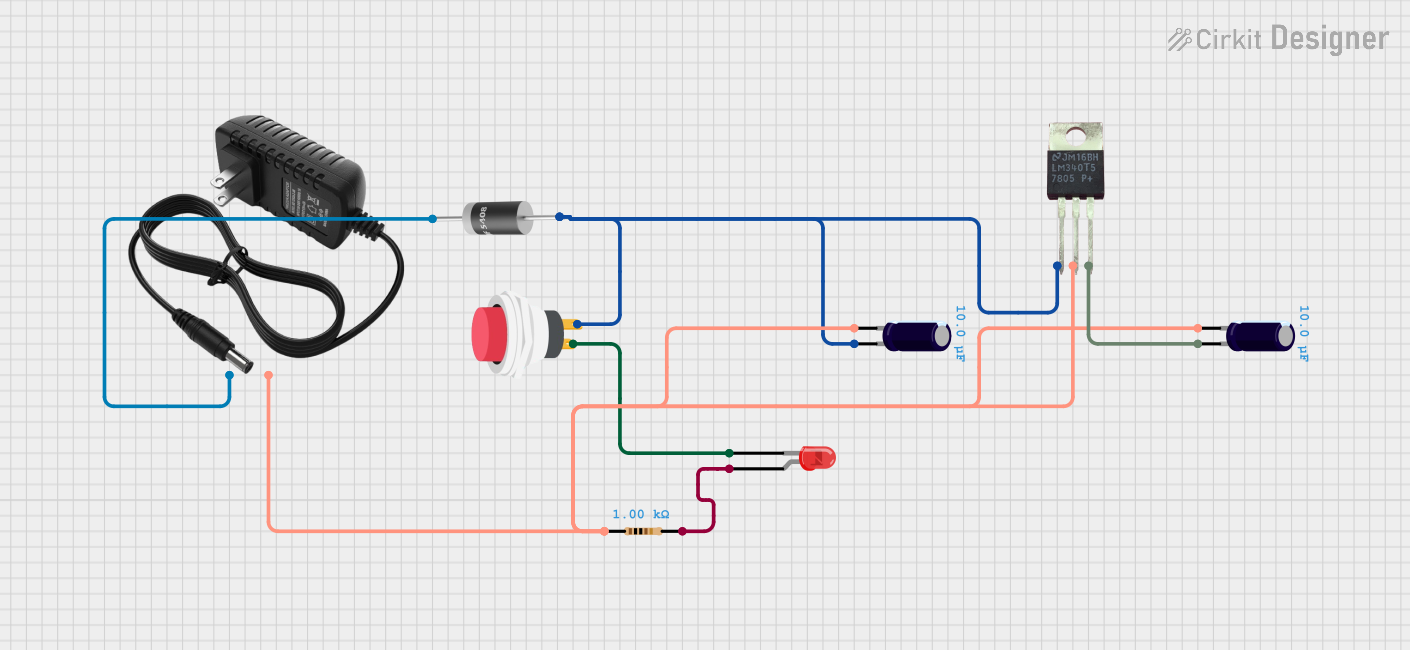
 Open Project in Cirkit Designer
Open Project in Cirkit Designer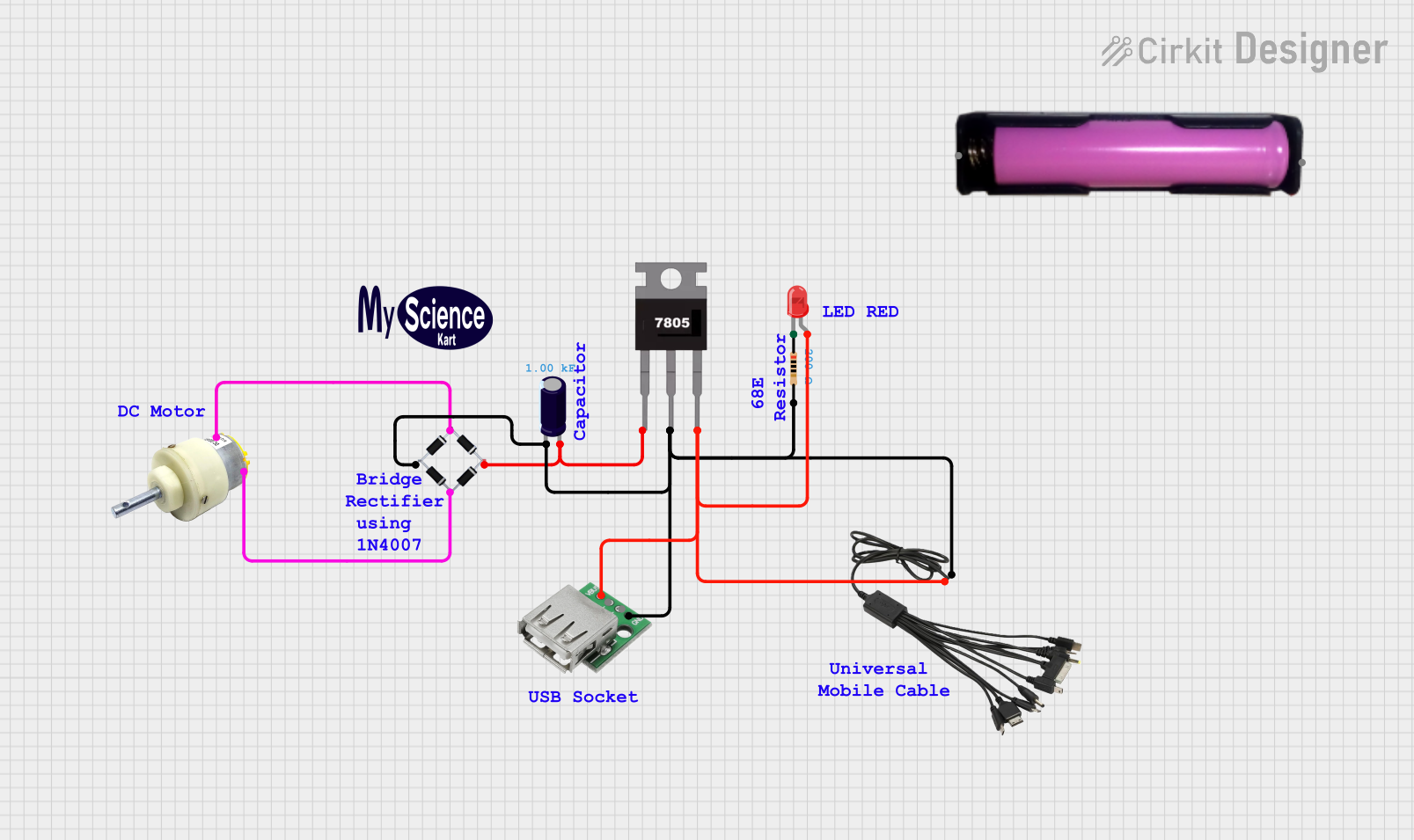
 Open Project in Cirkit Designer
Open Project in Cirkit Designer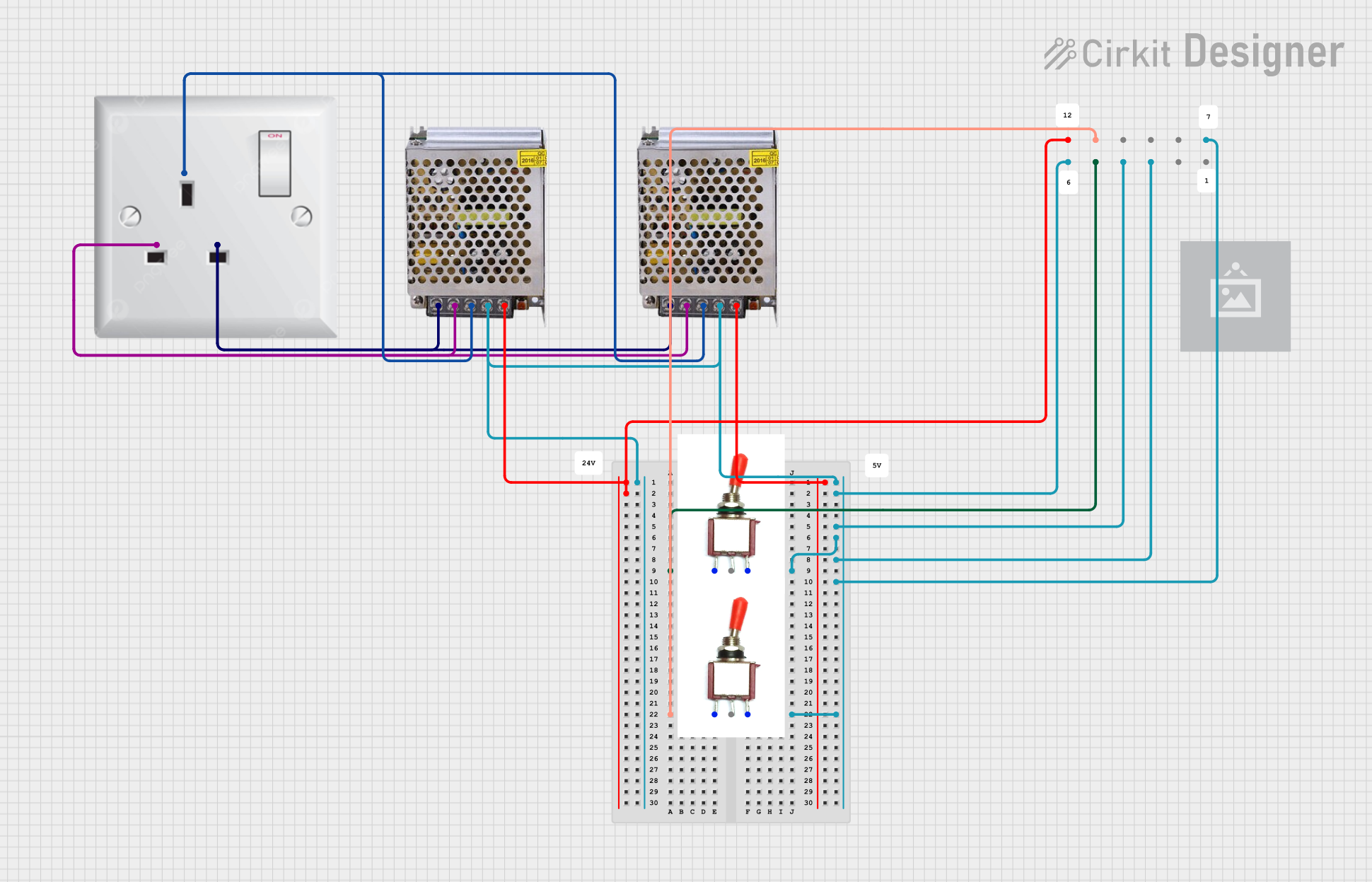
 Open Project in Cirkit Designer
Open Project in Cirkit Designer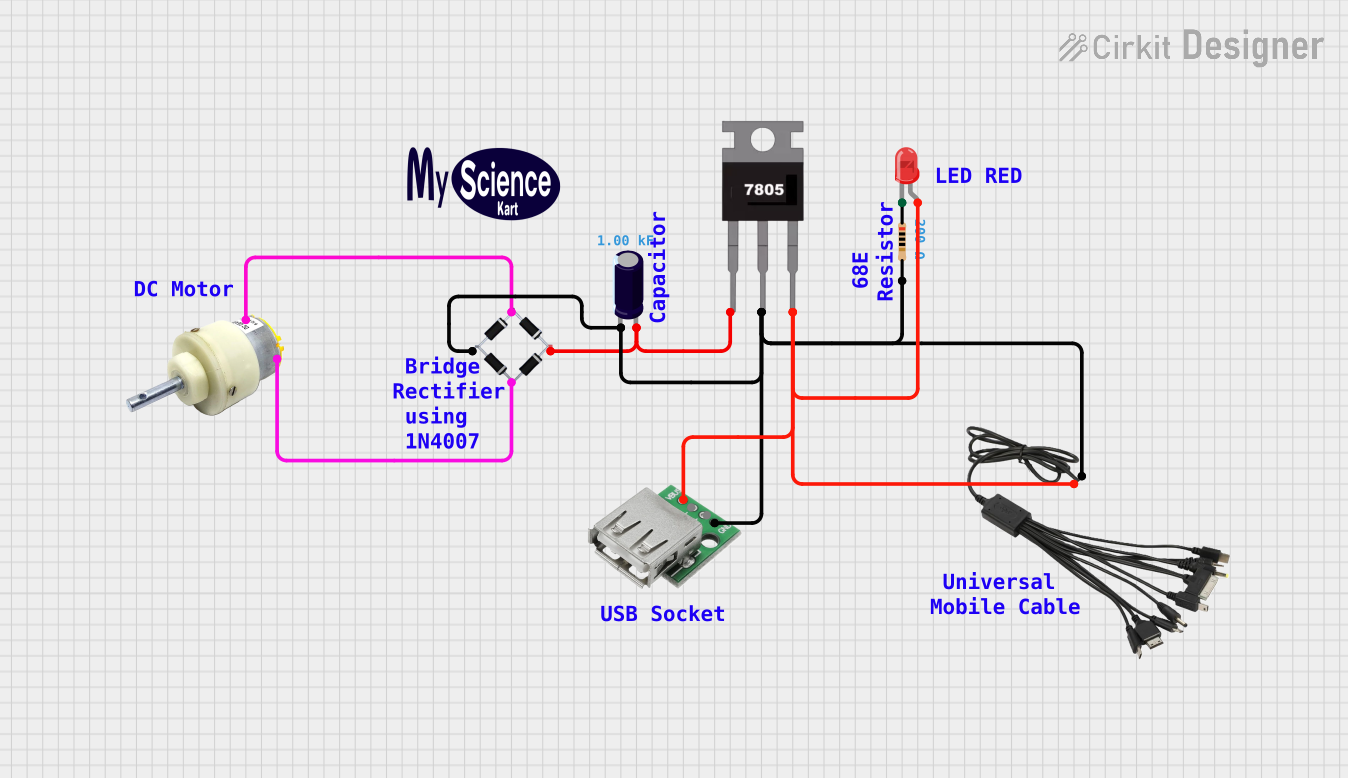
 Open Project in Cirkit Designer
Open Project in Cirkit DesignerExplore Projects Built with 5V PSU

 Open Project in Cirkit Designer
Open Project in Cirkit Designer
 Open Project in Cirkit Designer
Open Project in Cirkit Designer
 Open Project in Cirkit Designer
Open Project in Cirkit Designer
 Open Project in Cirkit Designer
Open Project in Cirkit Designer